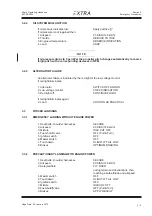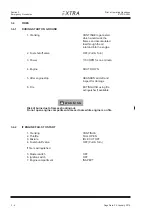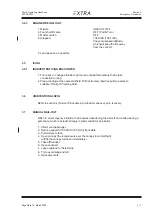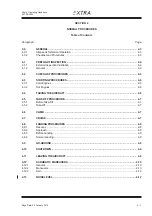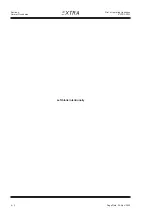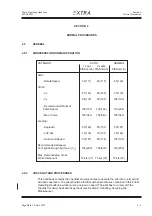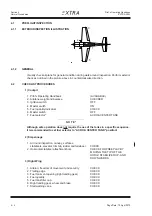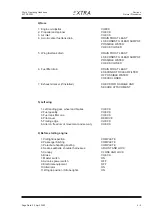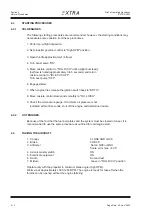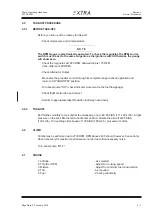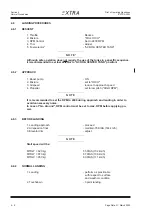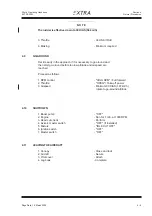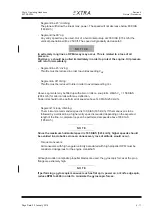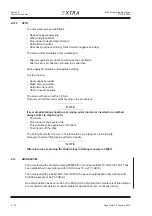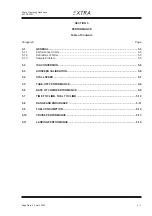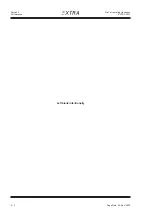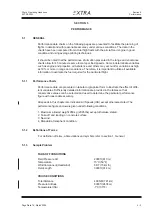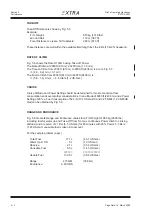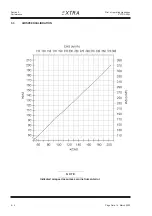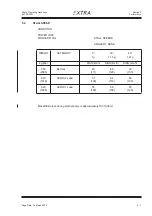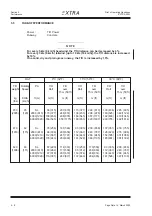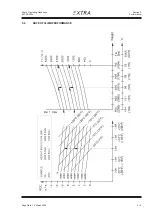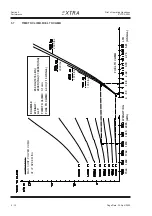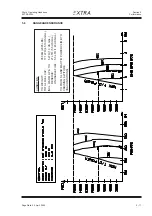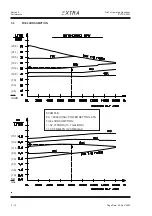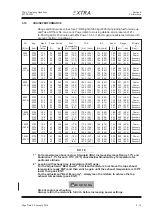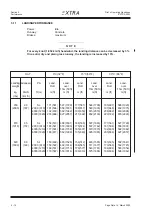
Page Date: 20. April 2002
4 - 11
Section 4
Normal Procedures
Pilot´s Operating Handbook
EXTRA 300L
- Segment line 45° climbing:
The plane will follow the line at max. power. The speed will not decrease below 80 KIAS
(148 km/h)
- Segment line 90° up:
Any entry speed may be used. Out of a horizontal pull-up at 200 KIAS (370 km/h) the
vertical penetration will be 2.500 ft. The speed will gradually decrease to 0.
N O T I C E
In extremely long lines a RPM decay may occur. This is related to a loss of oil
pressure.
Positive g´s should be pulled immediately in order to protect the engine. Oil pressure
will return immediately.
- Segment line 45° diving:
Throttle must be reduced in order to avoid exceeding V
NE
.
- Segment lin 90° diving:
Throttle must be reduced to idle in order to avoid exceeding V
NE
.
Above segments may be filled up with aileron rolls on snap rolls. Watch V
A
= 158 KIAS
(293 km/h) for aileron rolls with max. deflection.
Snap rolls should not be performed at speeds above 140 KIAS (259 km/h).
- Segment 1/4 loop, climbing:
The minimum recommended speed is 100 KIAS (185 km/h). If the maneuver is to be
followed by a vertical line, a higher entry speed is required depending on the expected
length of the line. A complete loop can be performed at speeds above 100 KIAS
(185 km/h).
N O T E
Since the maximum horizontal speed is 185 KIAS (343 km/h), higher speeds should
be avoided in acrobatics since an unnecessary loss of altitude would occur.
- Torque maneuvers:
All maneuvers with high angular velocity associated with high propeller RPM must be
considered dangerous for the engine crankshaft.
Although wooden composite propeller blades are used, the gyroscopic forces at the prop
flange are extremely high.
N O T E
If performing a gyroscopic maneuver such as flat spin, power on, or knife edge spin,
reduce RPM to 2400 in order to minimize the gyroscopic forces.
Page Date: 20. January 2016
Summary of Contents for 300L
Page 2: ...Left blank intentionally ...

